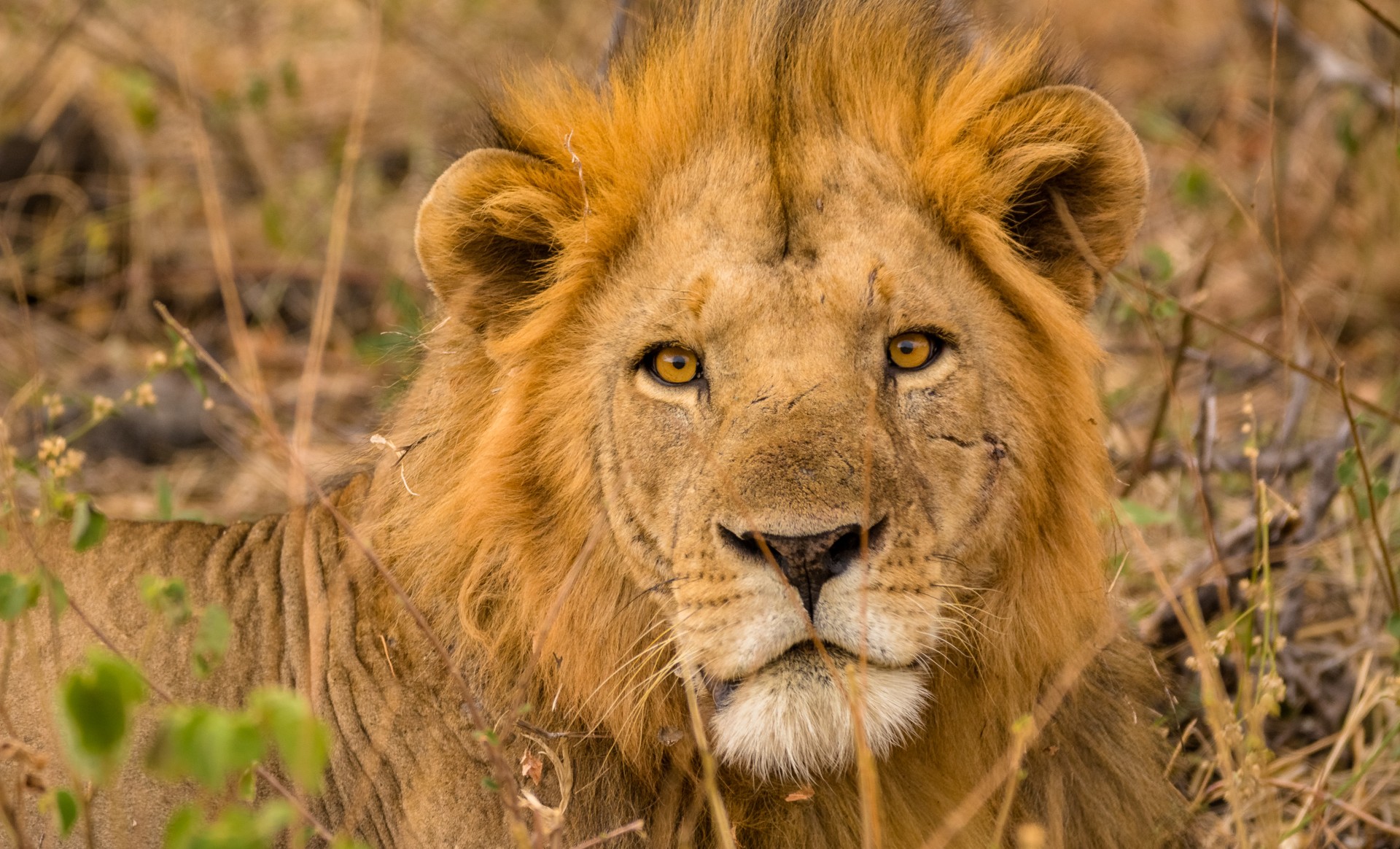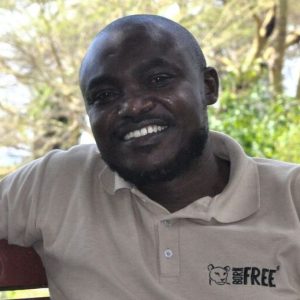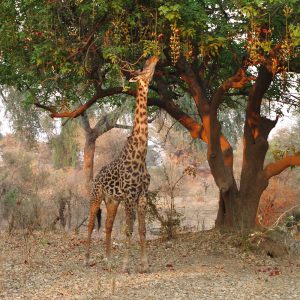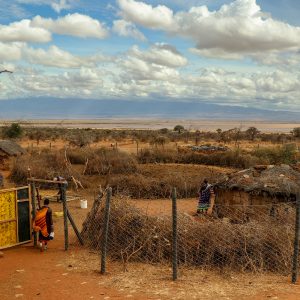Meet Dr Manoa: Long read interview
We recently had a chat with Dr David Manoa, our newly-promoted Head of Kenya Conservation and a key member of our team, about his love of the wild.

(c) Tom Stables Photography
 Dr David Manoa began working with Born Free back in 2003 and has been an integral part of our terrific Kenya office ever since. Manoa’s knowledge, drive and commitment to conservation has seen him complete first a master’s degree, then a PhD in human-wildlife conflict resolutions. We’re delighted to announce he was recently appointed as Born Free’s remarkable new Head of Kenya Conservation – well done Manoa!
Dr David Manoa began working with Born Free back in 2003 and has been an integral part of our terrific Kenya office ever since. Manoa’s knowledge, drive and commitment to conservation has seen him complete first a master’s degree, then a PhD in human-wildlife conflict resolutions. We’re delighted to announce he was recently appointed as Born Free’s remarkable new Head of Kenya Conservation – well done Manoa!
We’d love you to get to know him as well as we do, so curl up with a cuppa and enjoy his fascinating interview.
Firstly Manoa, congrats on your promotion, we’re so proud! How do you feel about your new role?
I am super excited in taking up this role to work with colleagues and other stakeholders to propel wildlife conservation in Kenya to another level. This role comes at a time when our charity’s is writing the five-year strategy, a document I believe is going to be a game changer. I am particularly excited about the chance to take on more challenging responsibilities and an opportunity to contribute to our strategic objectives.
You’ve worked with Born Free for an incredible 21 years, how has your role changed?
I started working for Born Free as a volunteer in 2003. At that time, I was volunteering for Youth for Conservation organisation, which took on recent university wildlife graduates to do jobs such as rescuing animals or removing snares around Kenya’s national parks. Born Free was looking for a young person with a research background, to help gather information and data from different scenarios involving people and elephants – to better understand the relationship between humans and this species.
One such scenario was where elephants lived in the same locality as people, another was people farming inside an electric fence and lastly, where elephants were partially restricted to the park using fencing. My role was to design a questionnaire, collect data and write a report on my findings. I then continued to work for Born Free on a voluntary basis until March 2005, when I was delighted to be confirmed as full-time employee. In recent years, I have dedicated myself to protecting wild lions in my role of Pride of Amboseli Manager, before taking up my new position as Head of Kenya Conservation.
Did you always want to help wildlife?
 I was born and partially raised in rural western Kenya, on the edge of the famous Kakamega Forest National Reserve. As children, we drove our livestock herds to the edge of the forest and that’s when we started to observe wildlife, not large wild animals but rather small and medium-sized mammals like baboons and gazelles.
I was born and partially raised in rural western Kenya, on the edge of the famous Kakamega Forest National Reserve. As children, we drove our livestock herds to the edge of the forest and that’s when we started to observe wildlife, not large wild animals but rather small and medium-sized mammals like baboons and gazelles.
Then, I moved with my father from this rural area to a small town called Nakuru in the Rift Valley region, not far from the famous Lake Nakuru National Park. At primary school, I joined the local wildlife club because it gave me the opportunity to see wild animals that I couldn’t see in the rural area I had come from. For instance, I had never seen a giraffe before.
So, when I went home from the first trip organized by the school, I said to my father: ‘I like this club, and I want to continue to be part of it’. I was eight years old when I visited Lake Nakuru for the first time and I stayed in the club throughout primary school, even becoming the organising secretary and continuing to be a member when I was at secondary school.
So, when I finished high school and I was selecting courses for my undergraduate study, it was very clear that I wanted to work with wildlife and that’s what I did. I then joined the Moi University’s Wildlife Club, where I also became one of the leaders. Wildlife became part of me and something that I really loved.
What key issues do Kenya’s wildlife face today?
There numerous issues, ranging from loss of space for wildlife to human-wildlife conflict. Even with the ongoing solutions to wildlife issues, the challenge is cultivating and maintaining people’s tolerance. It’s taken us and our partners a long time to build trust and to demonstrate that conservation measures can work, you can live in the same area with wild animals and there are non-lethal methods to prevent conflicts. It’s a delicate balance and we always work closely with the people living in the areas we work to ensure conservation efforts are successful.
There have been cases where members of the community have become angry with wildlife for destroying their crops or killing their livestock, and this has resulted in retaliatory killings. We want to work closely with communities to avoid instances of retaliation and promote coexistence, benefitting both people and wildlife.
I believe in simple and realistic solutions to wildlife’s challenges such as conflict between people and wildlife. The Kenyan government recently announced they will erect 350kms (217 miles) of electric fences around national parks and game reserves in six counties, in order to keep wildlife and humans separate. Conservation needs to work for people and wildlife and to be supported by communities. In a few isolated cases fences are necessary to ensure the safety of people and animals, as is the case for two Kenyan parks that neighbour cities –Nairobi National Park and Lake Nakuru National Park.
However, I don’t advocate for putting up fences everywhere, because it becomes a problem. We’ve seen it in Amboseli where some areas of the community lands are no longer wildlife habitats because people have put up fences, including electric fences. Giraffes get tangled up in the fence wires. Fences also block migration corridors, preventing individuals from moving in a certain direction, thus confining them within an area, whatever the season or availability of food and water. This can increase conflict as the competition for these resources between wildlife and people, and their livestock, is intensified.
Amboseli National Park is a small park of around 392km2 (150 square miles). If it were fully fenced off to enclose the animals in, we’d have over 2,000 elephants, and 141 lions confined to a very small area and their movements highly restricted. Traditionally, wildlife has moved between Tanzania and Kenya dispersal and conservation areas, therefore, fences are not a solution here. Building fences doesn’t contribute to meaningful conservation, it can create islands and a kind of an artificial ‘zoo’ in Africa. We don’t want this because wild animals should naturally move freely from one place to another.
Have things changed for wildlife since you began work?

Yes, indeed. A nice example of how things have changed for the better in Kenya is the impact of our Pride of Amboseli programme. When we started this project back in 2010, the entire Amboseli ecosystem had about 50 lions. According to a census done about two years ago, this had increased to 141 lions. Right now, the number is probably approaching 200.
One of the major problems that was causing people to kill lions was predation on their livestock, particularly during the night when people are asleep and may not be aware a lion is nearby their boma (enclosure) or possibly even entered it. By the time they realise the lion is in their boma, it is too late, as livestock will have already been killed. Maasai communities live in a semi-arid region, so they have no crops and depend majorly on livestock for survival.
So, constructing Born Free’s ‘predator-proof bomas’ has been a win-win situation for the community, protecting their primary and often sole source of income and protecting lions from retaliatory killings. If lions are unable to access livestock, people feel less need to retaliate. And we need lions. In Kenya we have neither huge gold nor oil mines, and so for us, wildlife is our gold with wildlife-viewing tourism being a major part of our economy. That is why we must protect wild animals and places, in whatever form they come.
How did you help develop the predator-proof bomas project?
When I was volunteering with Born Free, supporting school programmes, children would come into school and tell us ‘Yesterday I didn’t sleep very well because a lion came to our village and took our cattle from the herd, and so we have not slept and that’s why I arrived at school late’. I have seen how big a threat human-wildlife conflict is to people’s livelihoods and to wildlife.
Human-wildlife conflict is also something I have experienced personally. Growing up living at the edge of the Kakamega forest, our community is mostly crop farmers. Animals coming into your farms was always an issue and I wondered how we could solve this. How could my mother continue to farm without any problems? Although I was working in Amboseli where the Maasai are livestock herders and the problems are different, conflict and retaliatory killings remains the same.
I suggested the idea of using predator-proof bomas in 2006, based on the stories from children at school and hearing about ways bomas could be reinforced. I presented a short concept paper and asked the community if we could install some sturdy posts, chain links and a gate to their bomas. It initially began with only three bomas in a trial run but after seeing how effective they were at preventing predators from attacking livestock at night, we have now built 415 predator-proof bomas!
Why does Born Free calls Kenya its ‘spiritual homeland’?
For me, the spiritual homeland is the place where the charity’s mission and purpose resonate deeply. Kenya is the birthplace of Born Free. It is where it all started with our founder Dame Virginia McKenna and her late husband Bill Travers MBE starring in the film Born Free and later establishing the charity with their eldest son Will Travers OBE. Our spiritual homeland has extraordinary wildlife that roam freely sharing space with communities and this to me symbolises resilience and stewardship, making it an inspiring place to do conservation work.
Do you have a favourite species?
Yes, the lions stand out among other species to me. Lions are admirable in many aspects. But I am often inspired by how lions work together as a pride, coordinating hunts and protecting each other. They constantly remind me of how a strong collaborative approach can help us overcome ever-increasing conservation challenges.
Has an individual animal meant the most to you?
 Although I did not have the opportunity to meet Pole Pole the elephant, her untimely death in London Zoo, having been wild-caught in Kenya, and her enormous role in leading to the establishment of Zoo Check, the charity which evolved into the Born Free Foundation, has a significant meaning to me. The story of Pole Pole inspires me to continue protecting elephants, lions, rhinos, giraffes and other species in the wild.
Although I did not have the opportunity to meet Pole Pole the elephant, her untimely death in London Zoo, having been wild-caught in Kenya, and her enormous role in leading to the establishment of Zoo Check, the charity which evolved into the Born Free Foundation, has a significant meaning to me. The story of Pole Pole inspires me to continue protecting elephants, lions, rhinos, giraffes and other species in the wild.
Last year, we were over the moon when you received a PhD for investigating conflict between wildlife and people. Why was this important?
Very important and it has been a long journey. I completed my undergraduate degree in 2001 and started my PhD in 2016. I wanted to study to the highest level thanks to my late father. When my father was young, he didn’t go to school very often due to various circumstances, but he wanted it to be different for his children. He wanted us to have opportunities and go to school and university if we wanted. He supported me to attend secondary school, where I passed my exams and achieved the necessary points to go to university.
Whilst undertaking my undergraduate degree. I started to be inspired by the work and contributions of professors and graduate students in the Wildlife Department. I thought that one day, probably, if I got through my undergraduate degree and got funding, I should be able to do my Master’s and PhD so that I could also contribute to knowledge to society and become an inspiration to the people in my village.
I knew very well that I didn’t have the resources; when you’re in a large family, you have responsibilities – once you have a job, you also have your brothers, sisters and relatives to support. So, you have to look at priorities: am I going to do my Master’s or am I going to help my brother finish secondary school? You have to find a balance.
Luckily, I found this balance and I started my Master’s in September 2014 – already with a good idea of what I wanted to do for my research project – and finished it in record time in December 2015. Then I started looking for funding in different areas to see if I could do my PhD. Happily, Born Free was able to support my PhD, and I continued to be careful to balance my time between my studies, work and my own young family, and I achieved my PhD in 2023.
What are your dreams for the future?
My dream is a future where wildlife and communities are sharing space and coexisting. A future where communities are taking up nature-based solutions to improve their livelihoods and view wildlife as good neighbours and not enemy. A future where the Kenya Government will plan with wildlife in mind, allocating substantial amounts to conservation and harmonizing conflicting sectoral policies.
How can Born Free supporters help?
To help realise this dream, Born Free supporters can help at individual level by championing for sustainable wildlife conservation policies, and by continuing to support our ongoing amazing work in Meru Conservation Area and Amboseli-West Kilimanjaro Ecosystem.
Some of this interview was previously published in Biodiversity Mag’s 11th Edition. We are so grateful for their support, and you can hear more from Manoa about his role in Born Free’s work in Kenya, by enjoying this full interview.
